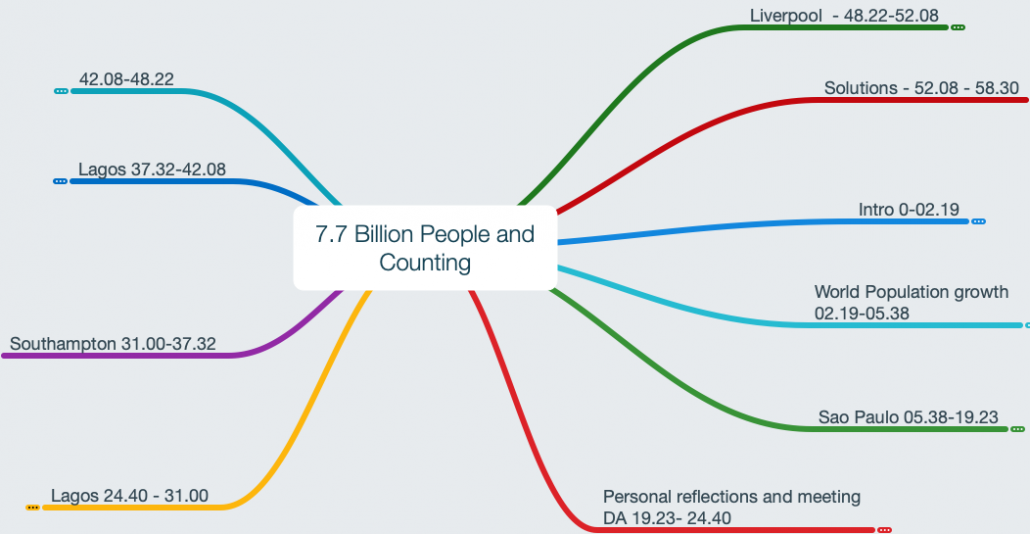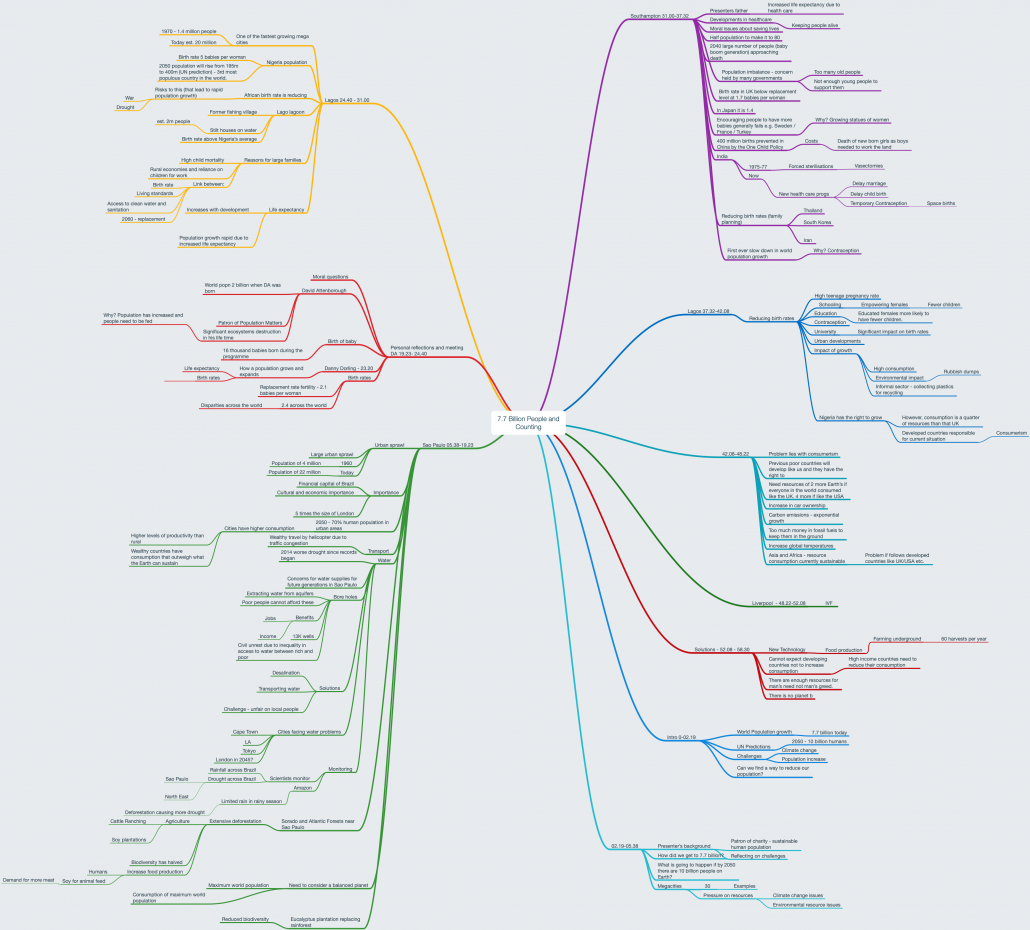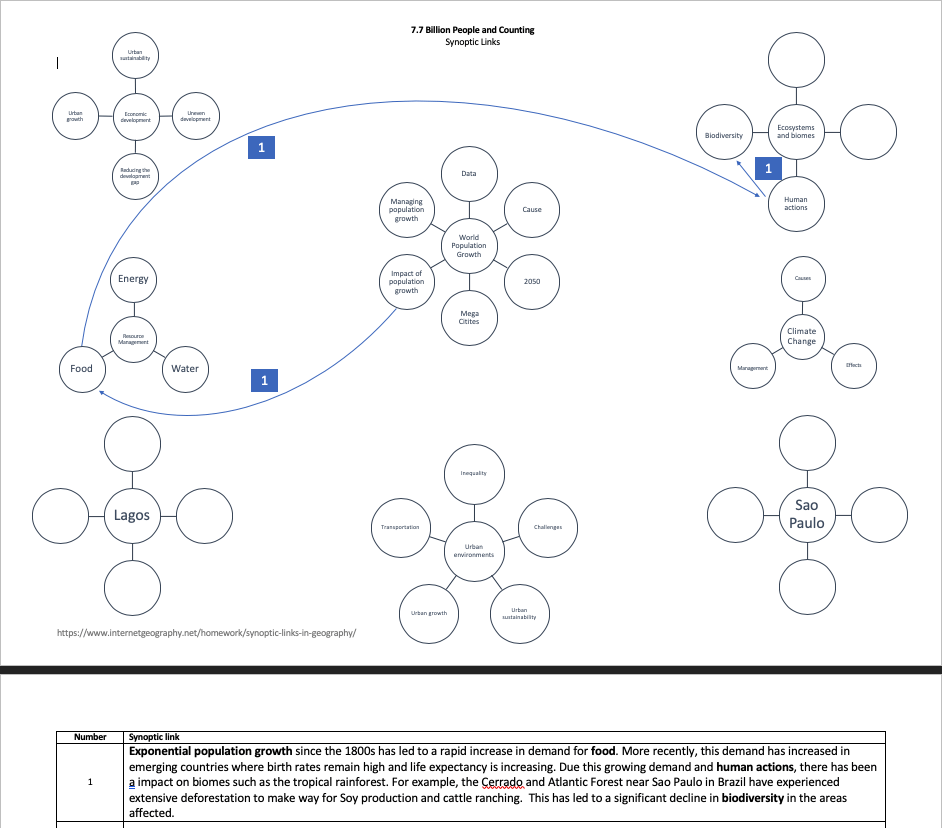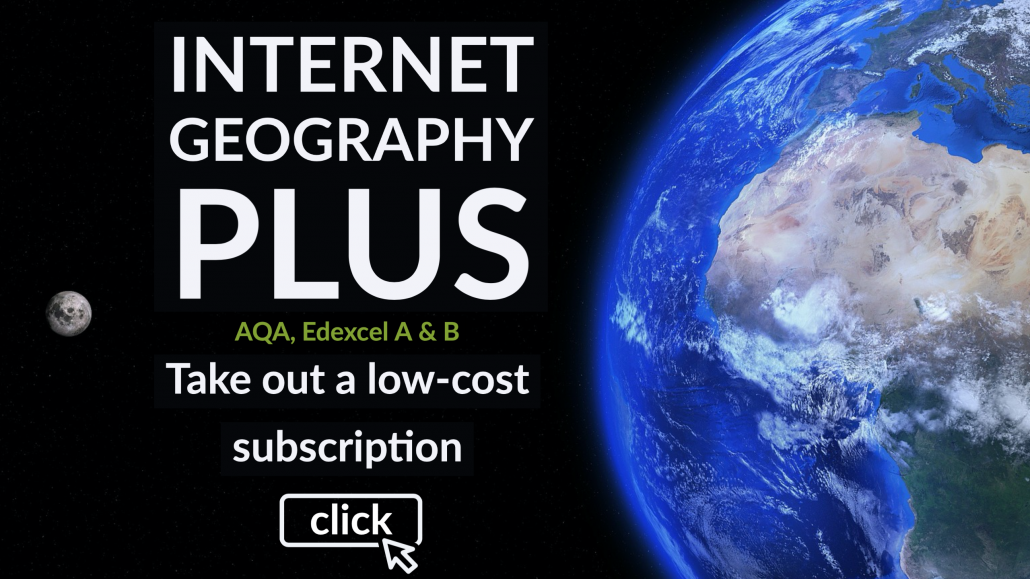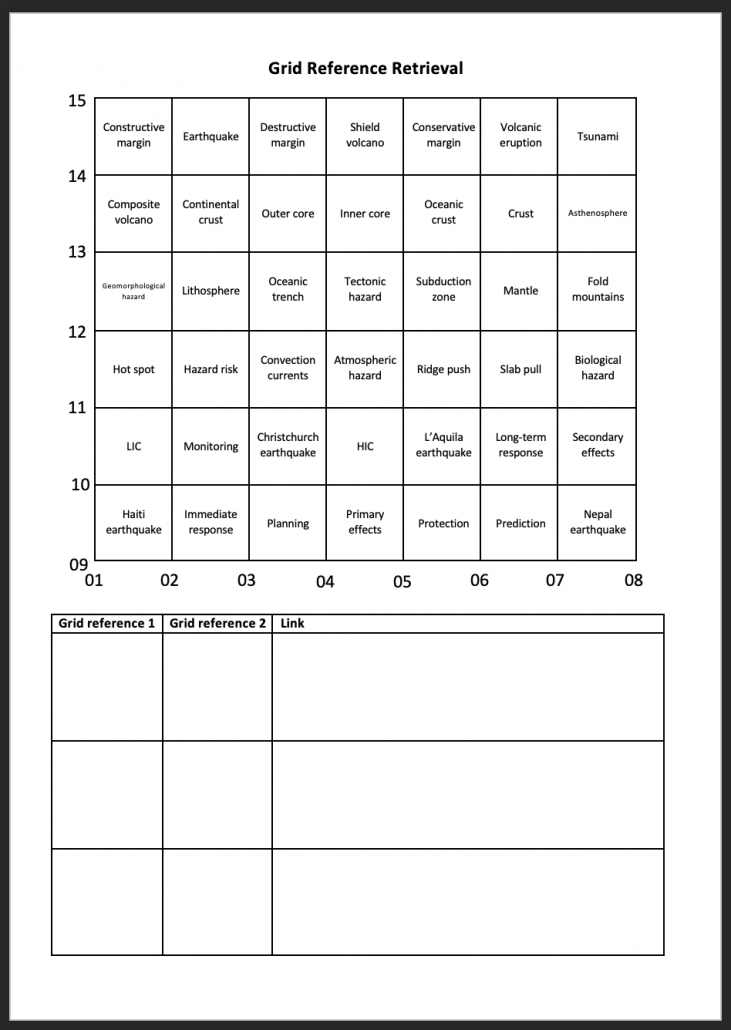7.7 Billion People and Counting
If you’ve not seen 7.7 Billion People and Counting Horizon documentary by Chris Packham, you really should. Chris presents the causes and effects of exponential population growth on Earth in a way that is accessible.
The episode is full of synoptic links and effectively brings together many units of the GCSE specification including development/economic challenges, urban environments, resources and ecosystems.
It really is worth showing this programme to GCSE groups to help them see the big picture of their GCSE course. No other programme, to my knowledge, does it as well as this one.
The diagram below provides a breakdown and timings for the episode if you want to ‘cherry-pick’ elements of the programme.
A more detailed break down is provided below.
You can view the 7.7 Billion People and Counting on BBC iPlayer until around the 18th February 2020.
Sarah Dodgson has kindly agreed to share a set of questions and answers for students to use when watching the programme:
- Questions for 7.7 Billion People and Counting
- Questions and answers for 7.7 Billion People and Counting
We’ve also developed an exercise for students to investigate synoptic links explored in the programme.
In this exercise, students are to complete the unpopulated circles around key concepts and case studies. Once they have done this they are to develop links between the different aspect of geography covered in the programme. An example of this has been included (see line 1 above). The students then discuss how these different elements are connected.
You can download the A3 7.7 billion people and counting synoptic links document in Word format. If you develop any variations of this please share with us and we’ll upload to the site.
If you have any resources you’ve developed around this programme we’d really appreciate it if you shared then with us to post on the site. Please email them to [email protected].
These resources are available due to support by Internet Geography Plus subscribers. Please help us further develop the site by taking out a low-cost subscription.

